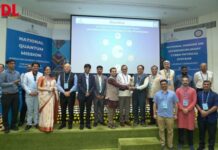The entire process of development of e-learning content brings together a group of people with different competencies. The rocess can be considered as The people–process–product continuum or P3 model. For example, people involved in the e-learning evelopment process can be Instructional Designers, graphics designers, project managers and quality assurance managers. The product can be a well-designed e-learning module and the process can be any tandard process like Dick and Carey Model. The P3 model is a olistic approach to course development and helps in not only creating very high-quality e-learning content, but also in delivery and maintenance of the course. This article is an attempt at envisaging the entire development process in a modular approach.
Broadly the e-learning development process can be divided into two major phases: (a) Development, and ( delivery and maintenance. Suitable content is developed in the first phase and the same is delivered using an appropriate medium in the second phase. A typical e-learning process has planning, design, dvelopment, evaluation, delivery and maintenance stages. The Iterative Process of E-Learning Based on the size and scope of the project, the number of individuals involved in various stages of an elearning project may vary. Some roles and responsibilities may overlap, as many e-learning tasks are interrelated and interdependent. A large-sized elearning project requires the involvement of various individuals. In a small or medium-sized e-learning project some individuals will be able to perform multiple roles. When an elearning course is completely designed, developed, taught and managed by a single individual, the same individual has performed the role of content expert, instructional designer, programmer, graphic artist, project manager, etc. This article has tried to identify various roles and responsibilities involved in the elearning development process. Sometimes there is a need for an instructional designer to explain the learning part of the project. The instructional designer is generally involved during the entire content development process, and once the
module is created, it is the responsibility of technical support to ensure delivery of the module and also take care of a few of the quality issues. Stages of the e-learning process A typical e-learning content development cycle contains the following stages: Planning, Design, Production, Evaluation, Delivery and maintenance, Instruction, and Marketing Planning stage During this stage a team consisting of project manager, instructional designer and the director worktogether and develop a project plan after a thorough analysis of the audience profile and user requirements. They analyse various aspects of people, process and products involved in the e-learning development initiative. This plan must be pedagogically and financially sound and should guide the entire elearning team (production, evaluation, delivery, maintenance, instructional and support services) to engage in their respectively assigned activities. The planning team must consider the various learning models and strategies before working out the entire plan. It is just not enough to make the plans pedagogically sound; they must be financially sound too. The team needs to work out the timeframe for every activity of the project, with possible breakdown time and buffer time to take care of exigencies. The end product of the e-learning planning process is a sound elearning project plan, whichprovides guidance during various stages of the e-learning process. Design stage The output from the planning stage, which is a plan document, is available at this stage for reference. People involved in this stage are instructional and graphics designers, interface designers, technology experts, and evaluation, quality and R&D personnel. The R&D person is responsible for reviewing course content for pedagogical soundness and selection of the appropriate delivery medium. He must be aware of limitations and capabilities of every medium and also the latest development in the area. Care must be taken to ensure the content is created using Aviation Industry Computer-based Training Committee (AICC or Sharable Content Object Reference Model (SCORM) compliant if needed. Instructional Designers play an important role, but their role is usually overlooked. The instructional designer designs the complete environment in which learning can take place. S/he conceptualises the e-learning strategy and methodologies based on the background of the audience. The design team must also communicate with developers about the action scripts. The output product at this stage is the storyboard.
Production stage
At the production stage the production team creates the e-learning course from the storyboard put together at the design stage. The production team creates all the required details independently and integrates them in the course module. It creates all the necessary links and makes the navigation smooth. The production coordinator leads the elearning production process. All members must put their modules in a central server so that security issues are also taken care of. All members must follow the same naming convention for each module. Every day team members can work on the module (s) and store it back on the server when they leave. This facilitates checking of the content independent of members. Once the course is created and quality check of the content is performed, it should be pilot tested. Once the project manager collects all the comments from the pilot test team members, he can discuss them with the instructional designer and necessary changes can be incorporated with the help of the development team. The product of the production process, then, is course material ready for pilot testing.
Evaluation stage
Evaluation is done at every stage of the entire life cycle, and feedback is incorporated in the product. Basically, there are two types of evaluations, formative and summative. Formative evaluation is conducted during the development stage and is iterative in nature. Summative evaluation is conducted at the end of the development when all the components are integrated into a fullfledged course. All the assessments are checked with respect to the learning objects, for their relevance and appropriateness. The overall look and feel of the course is very important and clients are very particular about it. Finally, the learning expert has to satisfy that the learner will learn from the course. The course is also evaluated for conforming to AICC, SCORM or other standards.
Delivery and maintenance
After the content has been created, the focus shifts to delivery. The driving force behind e-learning is that the course content (or the module) must be available at any time from anywhere to the learner. The content material may include audio, graphics, simulations, assessments, videos, reading material and other features. The delivery and maintenance (D&M) team plays a pivotal part during this stage. The team has to first load the content either on the server or on the learning management system (LMS) and test every bit of it, including simulation and navigation. The team must also take into account the size of the module andspeed of access, etc. In most cases, an LMS may be used for delivery of the module. There is a need to check the SCORM, AICC and other standards once the course is loaded here. The e-learning module must be available to the learner any time. The learner must have the control to leave the course and come back to it as many times as she wants. Overall, the D&M team is responsible for ongoing updating and monitoring of the e-learning environment, ncluding security measures for access control and information confidentiality.
Instruction stage
The instruction team is the core of good e-learning content development cycle. At the course instruction stage, instructional and support services staff (ISS) are the people involved in delivering the instructional product. E-Learning environment Once the content is ready the course may be offered either through a portal or in standalone mode. The expectation of the learner is that they must be provided with a good learning environment and uninterrupted learning time. It is necessary to see to it that the correct courses are received by students who register for a particular course. The Internet and availability of good bandwidth gives organisations one ore medium for delivery of learning content. This is attracting both academic and non-academic institutions to seriously consider elearning. The E-learning P3 model provides a comprehensive picture of the elearning process and helps identify the roles and responsibilities for the design, development, evaluation, implementation and management of all e-learning and blended learning materials and systems.
























